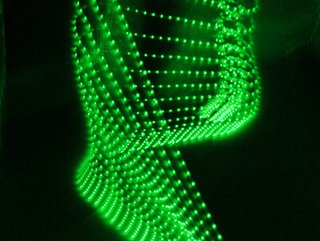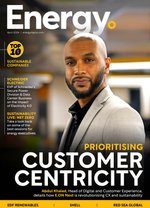Electricity 4.0: Blazing a Path to Net Zero

The fourth industrial revolution in the electricity sector, the term Electricity 4.0 often sparks an association with advanced digital technologies being integrated into the generation, transmission, distribution and consumption of electricity.
Electricity 4.0 was first coined by Schneider Electric, which firmly believes it to be the key in unlocking the future of the energy sector — representing the convergence of electric and digital at scale. Through this concept, electricity systems are empowered to become greener and smarter, with the integration enhancing efficiency, reliability, sustainability and flexibility throughout the entire electricity value chain.
In the words of Pankaj Sharma, Schneider Electric’s Executive Vice President, Secure Power Division & Data Center Business, Electricity 4.0 is the fastest path to net zero.
“The advantage of digital technology is that digital makes the invisible visible,” he begins. “When all available data is visible, it helps eliminate a lot of waste and helps in driving efficiencies.
“And when you think of electric, electric makes everything green. So it’s green from the perspective of using greener energy, having products and solutions which are greener, which means it is highly efficient and uses less and less carbon.”
With the intersection of the two being where Electricity 4.0 works its magic, it marks a paradigm shift towards a more interconnected, efficient and sustainable electricity system — especially as according to the latest stats, more than 80% of the world's grids are mostly relying on fossil fuels.
The power of Electricity 4.0
Electricity 4.0 is proven to be between three and five times more efficient than other sources, and it is also known to be the best vector for decarbonisation, with this increasing further as six times the amount of electricity will come from renewable sources by 2040, from 6% today to 40% in the next two decades.
Sharma adds: “It's important to be able to provide smart energy everywhere. And when I say everywhere, I mean everywhere. It doesn't matter whether it's data centres or other infrastructure like buildings, factory automation, homes or even grids.”
Sharma, who attended Dubai’s COP28 summit at the tailend of 2023, said a key takeaway for him is there is still significant progress needed to invert the global warming curve of 1.5°C, and with very few years left to make meaningful change.
“A lot of effort is needed, hence the need for this absolutely crucial interjection,” he adds, highlighting how despite this being a futuristic concept, it’s a transition that needs to be facilitated now.
Decarbonising the grid with Electricity 4.0
So, how do we future-proof the path ahead today? The first step, Sharma says, is making renewable energy — something the earth has in abundance — more reliable and readily available through technologies, helping to generate new, green energy, thus reducing demand on the grid. For example, Schneider Electric itself has products such as Uninterruptible Power Supply (UPS) which facilitates this approach.
“We help our clients create solutions, both digital and electric, so they can reduce demand on the grid, which means their own consumption goes down dramatically,” Sharma shares.
Working within Schneider’s data centre provision, Sharma knows all too well how energy intensive critical power, software and cooling technologies are, which is why he and his team work to create solutions to dramatically reduce that demand. The company also works on power purchase agreements (PPAs) for its clients to aid them in buying lesser carbon-intensive energies to negotiate better, cleaner power. For example, Schneider assisted Equinix and renewable energy developer wpd in signing seven 20-year PPAs, providing more than 100MW in capacity and more than 300GWh per year of green energy output in France through wind farms.
Balancing demand with supply, penetration to ensure a reliable and stable grid is another challenge that arises. Acknowledging that this is no mean feat, Sharma shares thow there are many different factors at play when it comes to streamlining the grid while staying true to sustainability commitments.
“How do you balance that demand?” Sharma asks. “When do you actually need it and how do you make sure that it is going to the consumption when it is actually needed?
Unified effort key to Electricity 4.0’s success
Sharma advocates that the energy transition is about everyone getting on board, like cogs turning simultaneously or being part of a domino effect, and the pursuit of a greener future is only possible with entities and individuals all coming together and forming a unified front.
He continues: “There has to be a desire from all and be a part of that game. These are early days.”
Showcasing that collaboration is key in the success of the energy transition and the technologies enabling this drastic change, the formative nature of Electricity 4.0 means that those behind this journey are blazing the path to a greener future. This is all while pursuing means that are right by the planet without offerings being compromised in quality despite demand continuing to rise.
Looping back to the statistics that outline exactly what must be successfully undertaken to reach science-based targets, Sharma questions if goals are in reach thanks to increasing demand. For example, the International Energy Agency (IEA) found that global electricity demand from data centres alone could double by 2026, and estimates that data centres, cryptocurrencies and AI consumed around 460TWh of electricity worldwide in 2022 — almost 2% of total global electricity demand.
“The big question is, is 20 years giving ample time when you think about these targets? We need to be able to do better,” Sharma concludes. “It's very important to continue to accelerate the technologies and software which can bring more renewables into the picture — whether it is about reducing the consumption of energy, which is what Schneider focuses on, or it is about decarbonising the grids.
“It's important to prioritise sustainable innovation. This is a collective goal, a mission to be able to save the planet. This is about collective responsibility. It’s a responsibility that includes companies like Schneider and the efforts from governments and policymakers as well as us as individuals and how we help to decarbonise.
“There are plenty of tools available today to help with this, and Electricity 4.0 is just one example, but it is the key is to be able to accelerate and amplify those tools.”
*******************
Make sure you check out the latest edition of Energy Digital Magazine and also sign up to our global conference series - Sustainability LIVE 2024.
*******************
Energy Digital is a BizClik brand.







